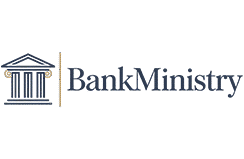The Foundation of Financial Well-being
Achieving financial stability doesn’t happen overnight. It requires planning, discipline, and the right tools to guide you. Budgeting and saving form the cornerstones of long-term financial success, and modern banking tools have made it easier than ever to streamline this process. These tools are designed to help track your expenses, set realistic goals, and stay on top of your financial game. With the right approach, anyone can take control of their financial future and make the most of their income.
Understanding Your Financial Landscape
Before you can start saving or budgeting effectively, you need a clear picture of your financial landscape. This involves tracking your income, fixed expenses like rent and utilities, and variable expenses such as transportation and entertainment. With advancements in banking technology, many apps and tools can automate this process. Bank apps now integrate features where transactions are categorized automatically, giving you insights into where your money is going. This clarity helps identify unnecessary expenses and make adjustments to align with your financial goals.
The Role of Savings Accounts
Savings accounts remain one of the most effective tools for growing your financial wealth. Today, banks offer a variety of savings options, including high-yield accounts, money market accounts, and Certificates of Deposit (CDs), each catering to different savings needs. High-yield savings accounts, for instance, provide better returns compared to traditional savings accounts, making them suitable for long-term goals. To help you identify the best savings option, compare the average interest rates provided by different account types in the table below:
|
Account Type |
Average Annual Interest Rate |
Ideal For |
|---|---|---|
|
Traditional Savings |
|
Short-term, low-risk savings |
|
High-Yield Savings |
|
Long-term savings goals |
|
Money Market Accounts |
|
Higher savings balance flexibility |
|
Certificates of Deposit |
|
Locked savings for higher returns |
By diversifying your savings across account types, you can work toward different financial goals while maximizing your returns.
Leveraging Budgeting Apps and Software
Gone are the days of manual budgeting using spreadsheets alone. Today’s budgeting apps like Mint, YNAB (You Need a Budget), and PocketGuard bring technology to personal finance management. These apps automatically track spending, categorize expenses, and provide insights to help you prioritize savings over discretionary spending. Certain apps even allow users to set financial goals, like saving for a vacation or paying down debt, and track their progress visually.
What sets these tools apart is their accessibility and functionality. They sync with your banking accounts and update your financial dashboard in real-time. This makes it easier for users to stay on top of transactions without the extra work of manual entry. Whether you’re a beginner or experienced with finances, budgeting apps are designed to simplify your money management.
Online Banking and its Budgeting Features
The rise of online banking has revolutionized how consumers manage their finances. Most digital banking platforms now include built-in budgeting tools that track spending categories, establish savings goals, and suggest ways to cut costs. Many banks also offer automated transfers, allowing customers to move a portion of their paycheck directly into savings without effort.
Some platforms go a step further, providing customized spending analyses based on their users’ financial habits. For example, these tools might alert you when you’re spending beyond your grocery budget or suggest allocating more funds toward a savings target. This level of integration positions online banking as both a transactional service and a powerful budgeting ally.
Credit Cards as Financial Tools
While credit cards are often associated with debt, they can be powerful tools for budgeting when used responsibly. Features like cashback, rewards programs, and purchase tracking allow users to manage their spending while gaining benefits. For example, cashback rewards on everyday purchases can be funneled into savings, while points earned from travel spending can help subsidize future trips.
However, the key lies in paying off your credit card balance in full each month to avoid interest fees. Using credit cards within your budgeted limits ensures that they remain an asset, rather than becoming a liability. Most banks also offer tools to monitor your credit card usage and provide alerts to avoid overspending.
Investing for the Future
Saving money is only one part of the financial equation. To build wealth, investing is essential, and banking tools make it accessible even to beginners. Many banks now offer investment platforms where users can explore mutual funds, Exchange-Traded Funds (ETFs), or even set up retirement accounts such as IRAs. These investment products allow users to grow their wealth over time with compounding returns.
For instance, ETFs are ideal for hands-off investors who want to diversify their portfolios. Tools provided by banks can help users assess their risk tolerance and suggest suitable investment options. By integrating investments with other financial accounts, banks make it easier for users to view their overall financial health in one place.
Financial Education Resources
A strong foundation of financial literacy is key to making informed decisions about budgeting and saving. Many banks offer free educational resources such as webinars, blogs, and workshops tailored to help customers improve their money management skills. Interactive tools, like savings calculators and compound interest charts, can also help make abstract financial concepts tangible.
For those seeking guidance, some banks provide one-on-one financial coaching sessions to personalize advice based on individual goals. These resources not only empower users to take charge of their finances but also foster long-term resilience against financial uncertainty.
Building a Savings Strategy
Creating a savings strategy is essential for achieving financial goals. Start by setting realistic, measurable objectives. For example, if your goal is to save $5,000 for an emergency fund, break it into monthly contributions that align with your budget. Set up automatic transfers to ensure consistent saving habits.
Celebrate small milestones along the way to stay motivated. For instance, reward yourself when you reach 50% of your goal with a thoughtful yet affordable treat. Your savings strategy should be flexible enough to adapt to unexpected changes while keeping you accountable for your objectives.
Empowering Your Financial Journey
Taking control of your financial future starts with the right set of tools and knowledge. Leveraging banking tools for budgeting and saving not only simplifies money management but also helps you achieve your long-term goals more efficiently. From savings accounts to investment opportunities, the resources outlined in this guide can lay the foundation for financial security and prosperity.
Start exploring what works best for you and build habits that pave the way for success. The first step may seem small, but every decision you make today brings you closer to financial freedom.




